Don't wanna be here? Send us removal request.
Text

It is said that in the making of Arda he endeavoured to draw Ossë to his allegiance, promising to him all the realm and power of Ulmo, if he would serve him. So it was that long ago there arose great tumults in the sea that wrought ruin to the lands. But Uinen, at the prayer of Aulë, restrained Ossë and brought him before Ulmo; and he was pardoned and returned to his allegiance, to which he has remained faithful. (с)
700 notes
·
View notes
Text

Aredhel and Maeglin escaping from Nan Elmoth.
1K notes
·
View notes
Text
"Aredhel the White was younger in the years of the Eldar than her brothers; and when she was grown to full stature and beauty she was tall and strong, and loved to ride and hunt in the forests. There she was often in the company of the sons of Feanor, her kin; but to none was her heart's love given. Ar-Feiniel she was called, the White Lady of the Noldor, for she was pale, though her hair was dark, and she was never arrayed but in silver and white."
—The Silmarillion, Of Eldamar and the Princes of the Eldalie
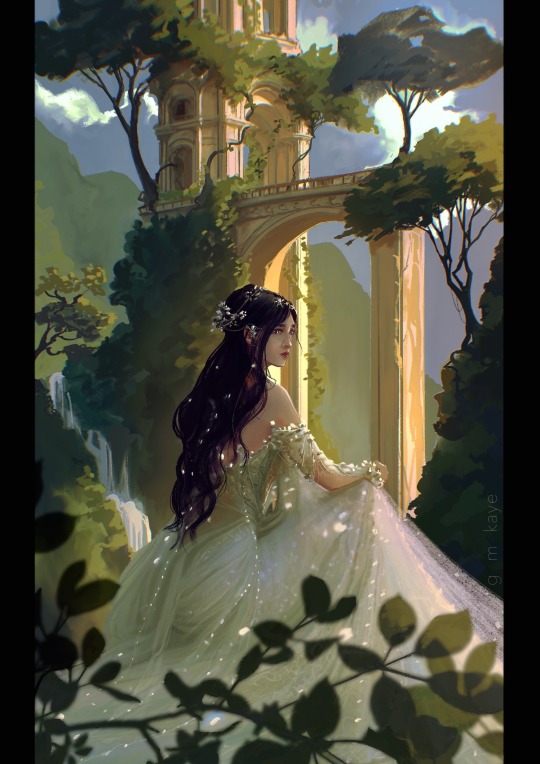
I actually made two palette versions and can’t decide which I like better: above is “sunset” (more dramatic), and below is “twilight” (softer).
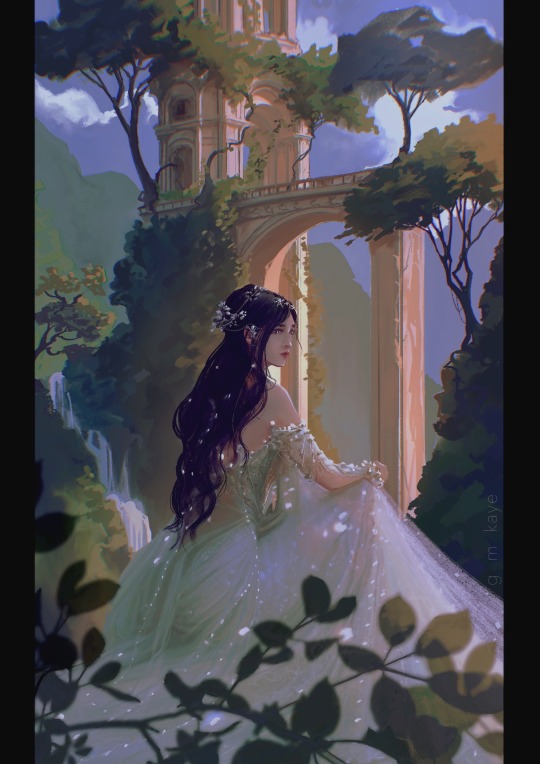
After doing a few quite illustrative, stylised paintings recently I think I may move back towards doing some realism for a bit
I’ve never really enjoyed sticking with one style of painting for too long - it’s more fun to switch around between stylised, realism and painterly imho :)
744 notes
·
View notes
Text
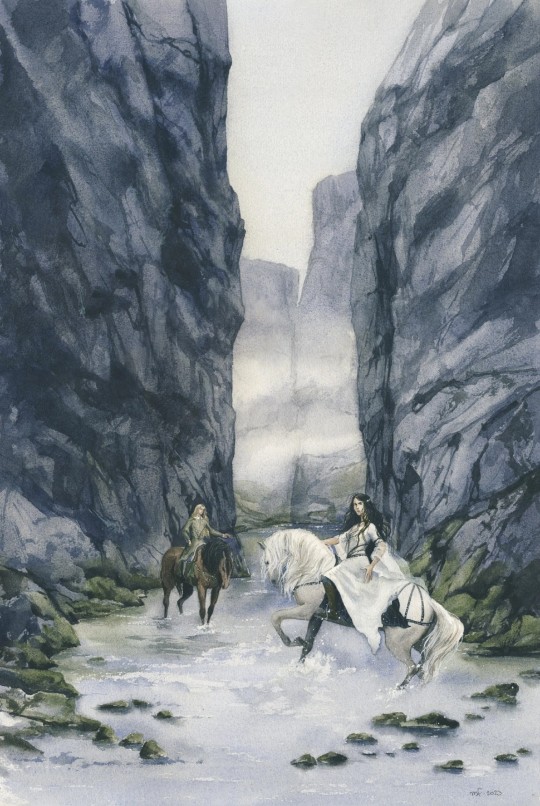
"Aredhel Ar-Feiniel, the White Lady of the Noldor, daughter of Fingolfin, dwelt in Nevrast with Turgon her brother, and she went with him to the Hidden Kingdom."
896 notes
·
View notes
Text
out of all the sibling relationships in the house of finwë i feel like aredhel and turgon often get short shrift….i mean she went with him in the night with no warning whatsoever so that they could build a city because of a dream he had and then stayed no-contact in that city for hundreds of years while he broke maybe the biggest elven taboo (while ignoring the wishes of the two most important people in his life) and killed the person who took his sister away from him. just more unhinged codependent til-death-do-us-part aredhel and turgon please, i am gnawing on the walls
309 notes
·
View notes
Text
the thought occurs to me that there's a distinct possibility that some Doriath march-wardens deserted, seeing the perils of the outside world and wanting to defend people from them…
and possibly they deserted to the Fëanorians.
178 notes
·
View notes
Text
One of the things I love about Maglor's little spurt of dialogue at the end of Silm is that he admits the oath has and will continue to lead them to evil acts. "Less evil shall we do in the breaking," he says--ergo, he believes continuing to follow it is evil and will cause them to do evil things. I don't know how this doesn't come up more whenever someone comes out of the pits of the left field with a "the kinslayings were justified" take. Even MAGLOR doesn't believe that.
222 notes
·
View notes
Text
Do y'all think Maedhros at some point realized that the age gap between him and his father was smaller than the age gap between him and Curufin? Do you think, beating at the edges of his mind, the thought ever came that he was hundreds upon hundreds of years older than his father ever lived to be? If so, we know he never faced that thought fully. An elf who throws himself into a volcano clutching his father's goal even as it sears his flesh cannot be said to have critically reevaluated his father's wisdom. What a bitter end, that an elf with so much experience, who had seen so much, would repeat his father's mistakes with eyes wide open rather then relinquish a shred of that legacy. There is something there that parallels Feanor zealously safeguarding Miriel's legacy. This is not a family that knows how to let go.
639 notes
·
View notes
Text
Maedhros, the captive king of the Noldor, on the way to that infamous rock
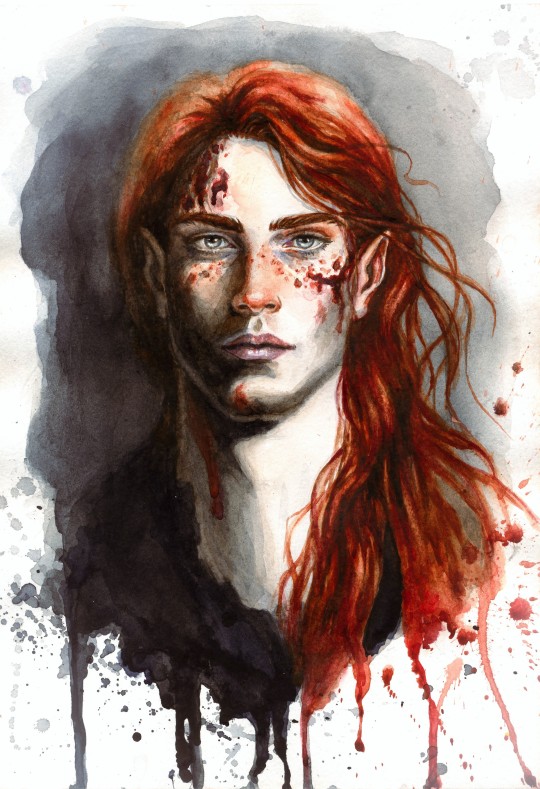
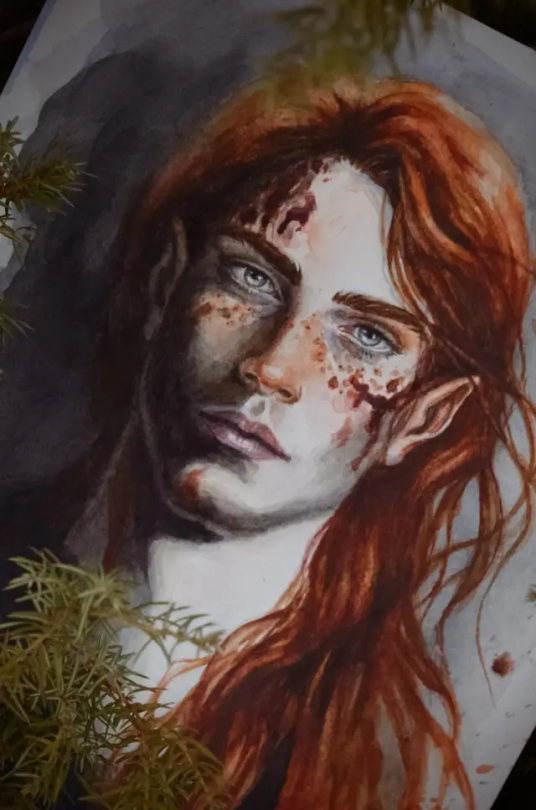
1K notes
·
View notes
Text
The order in which elves are Returned from Mandos is not strictly based on punishment. Sure, those who caused particular trouble (the Feanorians) are detained until there's enough peace in Valinor that they won't immediately destabilize things. But after that it's based on how long they take to heal and repent.
Everyone is very surprised when Celegorm is the first of his brothers out. (He's a bit insulted - surely Maedhros would be more startling?)
First off, Celegorm is honestly not traumatized. Sure, he died in a battle after seeing his little brother killed. He speared Dior through the heart, and got his windpipe severed by Nimloth. Celegorm died gasping for air and choking on his own blood.
But he'd always expected to go like that. Not just since they reached Beleriand, or since they attacked Alqualonde for the ships, or since he saw his grandfather's body. He' s been certain he would die violently since the first hunt he went on with Orome. Celegorm hadn't been good enough yet to catch anything himself, but Orome had shot a lynx. It had screamed and staggered for a moment, trying to fight even with an arrow in it's eye, before it collapsed. Celegorm had looked at the lynx's coat spotted with blood, and wondered how much harder it would be for someone to get it out of his hair after his death. He was going to be a hunter, and kill his own food and live off the land, but the wild cat had been just the same. Celegorm would try for his whole life to outrun death's arrow, but he always knew his luck would end. He didn't want to die, and didn't want to lose, but he accepted it.
Secondly, Celegorm actually fairly willing to admit he was wrong. Not like, morally wrong, but he rarely considers things from a moral point of view anyway. The kinslaying at Alqualonde was apparently not necessary, as plenty of people with less wilderness experience than him successfully marched across the Helcaraxe to reach Middle Earth. He recognizes though that attacking Doriath didn't work, and that holding Luthien prisoner didn't work. He admits that possibly if he hadn't held Luthein prisoner, he wouldn't have needed to attack Doriath in the first place as someone could have figured out a diplomatic solution. He didn't think things through, and hurt people, some of whom he liked, and wants to avoid that happening again.
Lesson learned, right? Next time Celegorm sees one plan that looks impossible and one that involves killing people, he'll try the impossible one. Killing people just causes more problems in the long run, and impossible plans sometimes succeed.
So Celegorm regrets attacking Doriath and Alqualonde and kidnapping Luthien. If given the chance, he wouldn't do it again. He thinks it's totally justified for people to be angry at him for those things, just like he's angry at Morgoth for Finwe and Feanor's deaths.
Namo is grading on a bit of a curve, but he's willing to round that off to "repentant" in order to have one less Feanorian in his halls.
396 notes
·
View notes
Text

"Eärendil was a mariner
that tarried in Arvernien
he built a boat of timber felled
in Nimbrethil to journey in…”
There is my illustration of Earendil, with the silmaril on his brow
990 notes
·
View notes
Text
HAPPY FELLOWSHIP OF THE RING PUBLICATION DAY!!!!!! 29 JULY 1954 BABEYYY!!!!!!!!!
2K notes
·
View notes
Text



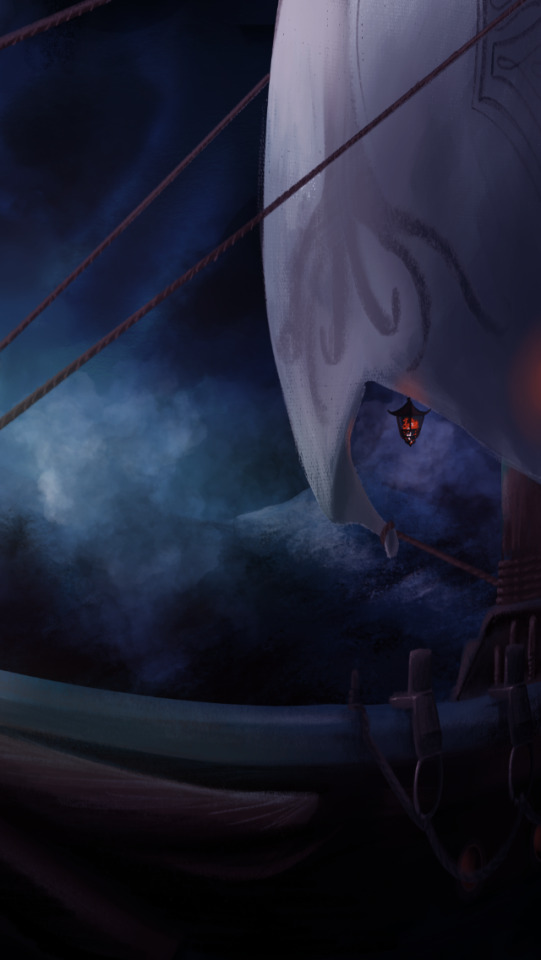
"a commanding figure of great strength of body and supremely royal demeanour and countenance."
"Upon that ship which was cast the highest and stood dry upon a hill there was a man, or one in man’s shape, but greater than any even of the race of Numenor in stature...And it seemed to men that Sauron was great; though they feared the light of his eyes. To many he appeared fair, to others terrible; but to some evil.”
21 notes
·
View notes
Text
The Feanorian Star

Honestly, the only “official” source for the Feanorian star that I could find was from Lord of the Rings (if I’ve missed something, please let me know!). When the fellowship sees the Doors of Durin they identify the main symbols carved on the door:
`There are the emblems of Durin!’ cried Gimli. `And there is the Tree of the High Elves!’ said Legolas. `And the Star of the House of Fëanor,’ said Gandalf.
So from the very beginning the star on the door of Moria was connected to Feanor. Which is interesting, because the emblem that Tolkien drew for Feanor is different (the original scan was faded and hard to see details, so I traced it, below on the right.) There are some clear similarities - the Feanorian star on the Doors of Durin has eight points with eight rays behind it. Feanor’s emblem has eight flames and eight rays. So the two are obviously linked - my theory is that the star, being a simpler design, was used more commonly, perhaps on armor, etc, while the emblem was more official. Also, Feanor’s emblem was likely used for him alone (or perhaps his sons as well), while the Feanorian star was, as Gandalf described, connected with the House of Feanor at large (meaning Feanor, his sons, and all of their followers.)
Finally, a quick note on the eight-pointed star. I just think it’s interesting that both of Feanor’s symbols use the number 8 so heavily, since it’s otherwise not a very significant number in Middle Earth. My only explanation is perhaps it’s meant to be Feanor plus his seven sons? But I’m open to other theories, lol.

SOURCES: LotR, J.R.R. Tolkien: Artist and Illustrator (for the crests)
289 notes
·
View notes
Text

It is said that in the making of Arda he endeavoured to draw Ossë to his allegiance, promising to him all the realm and power of Ulmo, if he would serve him. So it was that long ago there arose great tumults in the sea that wrought ruin to the lands. But Uinen, at the prayer of Aulë, restrained Ossë and brought him before Ulmo; and he was pardoned and returned to his allegiance, to which he has remained faithful. (с)
700 notes
·
View notes
Photo



Miriel in the House of Vaire, weaving the history of the House of Finwe
(finally found some time for art… decided to add color to this old drawing)
#reblogging again#because i think this might be my all time favorite tolkien art#the concept#the execution#perfect#jrrt#art#fave
798 notes
·
View notes
Text
i’m sort of enamoured with the cruel servants of celegorm actually. in a story where (a.) we rarely see elves motivated to kill purely out of revenge and (b.) the lord-vassal dynamic is largely shown as strictly either mutual loyalty and affection (ie. finrod-house of bëor) or the vassal was bad from the outset (ie. caranthir-ulfang), they are unique in their role as presumably loving, loyal, til-death-do-us-part companions who are motivated by that love to do a terrible thing—but more importantly, a terrible thing that wasn’t going to accomplish anything. enamoured with the kind of devotion that makes people behave like that….enamoured with an adoration so strong it goes beyond death and cultural taboos and utility…..one of the worst and saddest and most sickening parts of the silm and it was caused by love!!! just bake me into a pie about it!!!
371 notes
·
View notes